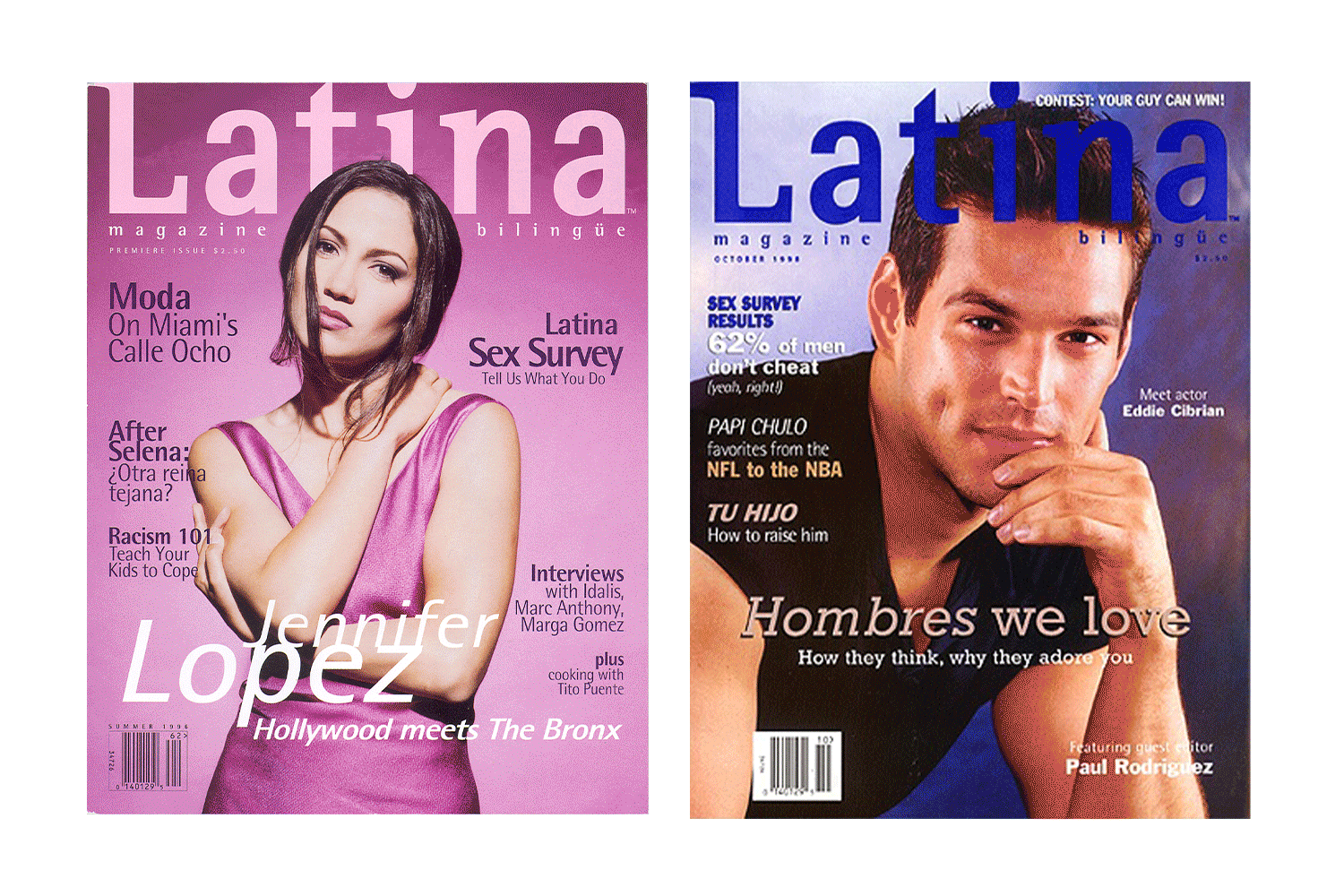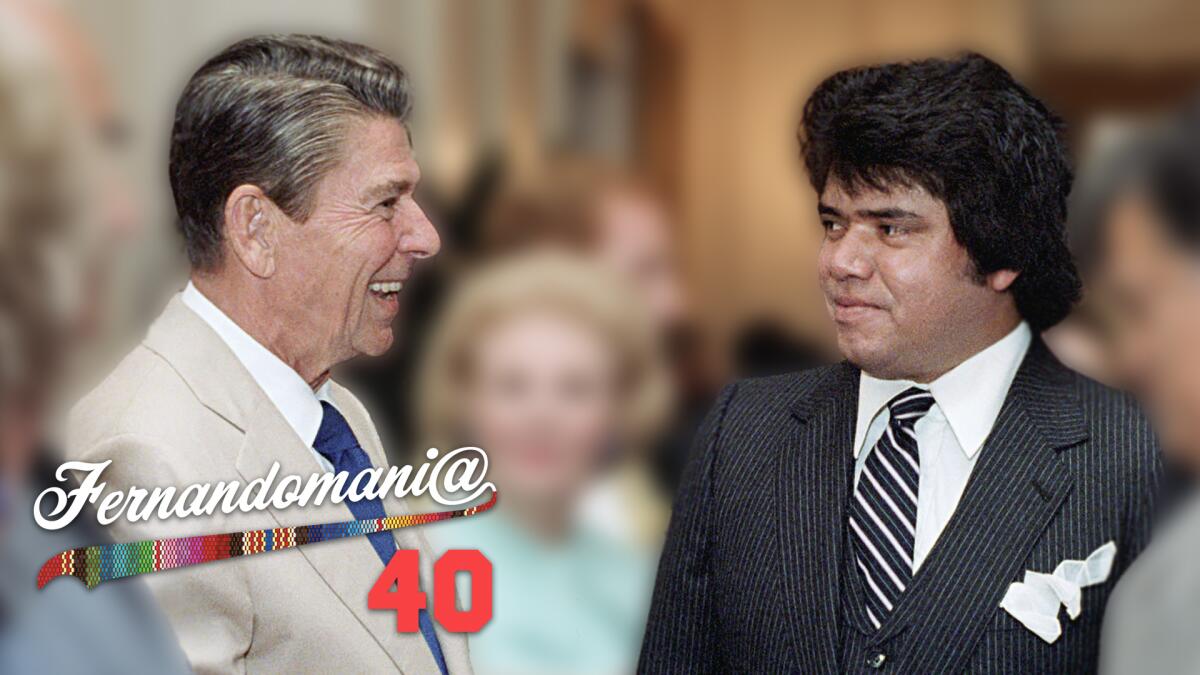Latinx Files: The return of Latina

- Share via
In the early 1990s, while taking a business class at Stanford Law School, Christy Haubegger came up with a plan for a would-be magazine that would cater to Latinx women. Her professor liked the idea and told her it was viable.
Haubegger, who was born to a Mexican American mother and was adopted by white parents that encouraged her to get in touch with her heritage, didn’t act on the idea at first. It wasn’t until after she graduated that she really considered turning her proposal into a reality.
In June 1996, Latina published its first issue. It featured a story on the fashion of Miami’s Calle Ocho and tips on how to talk to your kids about racism.
“Jennifer Lopez was on the cover,” Haubegger said in a 1999 Los Angeles profile, recalling the first time she saw Latina on newsstands. “The magazine right next to it had Claudia Schiffer. And we looked just as good.”
(Haubegger would leave Latina in 2002 to pursue a career in the entertainment industry. She’s currently an executive at WarnerMedia.)
Latina was ubiquitous for much of the late 1990s and early 2000s. The magazine was available at your local grocery store and you’d regularly see it in doctor’s and dentist’s waiting rooms. Some of its early success could be attributed to doing something that’s taken media and advertisers decades to figure out: U.S.-born Latinxs speak and read English.
But then came the advent of the internet and a turn toward digital media consumption. The print world (including my own employer) were forced to adapt to this new reality. In 2018, the New York Post reported on Latina’s financial woes, which ultimately resulted in the company scrapping their print product altogether. It looked like the end for the pioneering publication.
But rather than folding, Latina went on hiatus to regroup and existed largely on its sizable social media platforms (as of this writing, its Instagram page had 475,000 followers and it has nearly 147,000 followers on Twitter). In October 2020, the company hired Camila Legaspi, a 25-year-old Mexican American woman born and raised in New York City, to be its chief content officer. In May, nearly 25 years after its first issue, Latina relaunched as a digital magazine, featuring Grammy-winning artist Kali Uchis on its cover.
A few weeks back, I jumped on a Zoom call with Legaspi to talk about the return of Latina and its plans for the future. The following Q&A has been edited for clarity and length.
The Latinx experience chronicled
Get the Latinx Files newsletter for stories that capture the multitudes within our communities.
You may occasionally receive promotional content from the Los Angeles Times.
Something that struck me as I was looking through Latina’s website is that it’s more than just lifestyle and beauty tips. It feels more inclusive. What was the impetus for this change in editorial direction?
Latina is such a revolutionary publication that has meant so much for many. But it’s hard to pretend that it didn’t constantly feature white or white-adjacent Latinos on the cover. Part of relaunching is knowing our past and wanting to fix that. Writing about and covering Latinos is such a challenge because we are not a monolith. There are so many stories to be told, and our goal is to put out as much of them as we can.
Before, we were very much a magazine for Latina women. We’ve reworked it to be a place for Latinos, regardless of how they identify. I’m 25 years old. My peers and I have grown up in a media landscape that has tried to be more inclusive and open, and that influences our approach. We really want to be a safe haven for everyone. We’ve had stories on our site that contributors said they’d pitched to other publications and were rejected because it might not have fit the conventional idea of what is considered a story for Latinos.
As you mentioned, Latinxs are not a monolith. How do you cover a community of nearly 60 million people that’s all over the place geographically?
We have people in those places. I’m based in New York and I grew up here. Our managing editor, Alissa Lopez Serfozo, is Mexican American as well and is based in L.A. Our editor at large, Verky Baldonado, is based in Miami.
It’s kind of the right time to be asked this question than a year ago because of remote work. We’re all working from home in three different locations, which allows us to stay plugged in. As we grow and expand, the hope is to find people in places like Texas and Chicago, which have big Latino populations. We are a small team and we just launched, but we’re always looking for more writers and freelancers.
You briefly touched on this generational shift that’s happening with the Latinx community. A 2016 Pew report said that millennials and younger generations accounted for 61% of the overall U.S. Latinx population. Something I’ve noticed as part of that change is a willingness and a desire to think critically of what “Latinidad” means or if it even exists. What are your thoughts on that?
I know for some people speaking on their Latinidad is kind of a sacred thing. For some, it’s a way to understand their relationship to their identity in the United States, seeing it as a common thread they have with others. But it’s also obvious that many people feel excluded from that conversation. We don’t really have any articles on our website that use Latinidad as a term or an idea meant to categorize everyone. We’ve had people bring it up because they feel strongly about it, but it’s always them telling us about it.
Even the term “Latinx,” as I’m sure you know, is being reassessed as to whether it’s the best term to describe our community. We recently interviewed Kablito, a musician who spoke about how she identifies as Latina because she doesn’t love “Latinx” because she felt it was a U.S.-created label.
One of the goals of Latina as a platform is to showcase the difference of opinion and conflicting views that exist, and that includes exploring how people grapple with these terms of identity.
What does success look like for Latina?
On a personal level, I want Latina to be one of the go-to places for Latinos to find stories about them. I want people to be able to call me up and say, “Hey, I saw that story on Latina because my friend shared it!” I feel like everyone has four or five publications or websites that they check regularly, and I want Latina to be one of them because I feel like I don’t have that.
Business-wise, our goal is to partner with brands that really align with our values and are behind our mission. We’re not going to be partnering up with companies that are just looking to check off the box of Latino representation. Our goal is to connect with sponsors and partners and brands that can sustain our model and that can assist in producing docu-series, interviews and really important stories that uplift our community. Having the brand power that Latina has behind us helps.
But it’s a tricky thing because also I think that when it comes to branded content and advertisers, people are tired. But that’s the reality of media. It’s unfortunate because print magazines were sustained through full-page advertisers. That doesn’t exist now. I think the way that we’re moving is to do these forms of branded content, but to do them in an authentic way.
Another way in which I hope Latina is successful is that we make a dent in the lack of Latino representation in Hollywood. I don’t have to tell you about it. You’ve written on the subject and have seen the numbers. My hope is that we can partner and co-produce content with Hollywood production companies. Our hope is to work towards changing that in the future.
Consider subscribing to the Los Angeles Times
Your support helps us deliver the news that matters most. Become a subscriber.
Reader callout: The second anniversary of the El Paso shooting
Tuesday marks two years since a white supremacist drove more than 10 hours from a Dallas suburb to the predominantly Mexican American border city of El Paso to “kill as many Mexicans as possible.” In the end, the shooter killed 23 people and injured 23 more, making this one of the largest acts of violence against Latinxs in the United States.
Next week’s edition of the Latinx Files will be devoted to this horrific and hateful attack and its aftermath. My hope is to get your thoughts and feelings on the matter. You can send them to me by emailing LatinxFiles@latimes.com.
Fernandomania @ 40: Fernando Valenzuela and immigration reform

The latest installment of our multi-part documentary series “Fernandomania @ 40” is out today. You can watch here.
In June 1981, amid his remarkable rookie season, Fernando Valenzuela was invited to the White House to meet with President Reagan and Mexico President José López Portillo. At the time there had been no meaningful U.S. immigration law passed for 30 years. But in 1986, the Reagan White House helped pass the Immigration and Control Act, which granted amnesty to many undocumented immigrants. Many credit “the Fernando factor” for helping raise the president’s awareness on the issue.
It’d be remiss if I didn’t mention that passage of that law resulted in Reagan being viewed favorably by those whose family members were granted amnesty. I want to be 100% claro on this, however: That reverence wasn’t and still isn’t universal. For many whose roots are in El Salvador, Reagan isn’t seen as a hero but rather as a president whose administration provided economic aid and military training and equipment to the Salvadoran government during the height of the country’s civil war. To learn more about the U.S. involvement in El Salvador, you can read this primer.
Missed an episode of “Fernandomania @ 40”? You can find them all here.
Things we read this week that we think you should read
— Here’s something a little different. A Twitter follower of the L.A. Times Latino Caucus asked the group to put together a summer music playlist based on what we’ve been listening to, so we did just that. You can find the thread of what songs are included here, and if you have Spotify, you can listen to the playlist here.
— On Friday, the Visalia Times-Delta reported that Luis Grijalva from Fairfield, Calif., had qualified to compete in the men’s 5,000-meter race at the Olympic Games in Tokyo, but his participation was in question because he’s a DACA recipient and traveling out of the United States could jeopardize his quasi-legal status. This story has a happy ending, though. On Monday, Grijalva announced on Instagram that he had been granted advance parole, which will allow him to travel and represent his native Guatemala (his family left the country when he was a 1-year-old) in Tokyo. The Washington Post has more on Gijalva’s inspiring story and the bureaucratic challenges he faced.
— For the New Yorker, Graciela Mochkofsky wrote about Lorgia García Peña, a beloved professor of Latinx studies who was denied tenure at Harvard. An investigation by a panel of Harvard professors found that García Peña, known at the school and across academia as “La Profe,” had been a victim of discrimination, but the school refused to review her case.
— The homies over at L.A. Taco profiled Victor Jaramillo Soriano, a 97-year-old honey man originally from Mexico’s Zacatecas state who could very well be L.A.’s oldest beekeeper.
The Latinx experience chronicled
Get the Latinx Files newsletter for stories that capture the multitudes within our communities.
You may occasionally receive promotional content from the Los Angeles Times.







